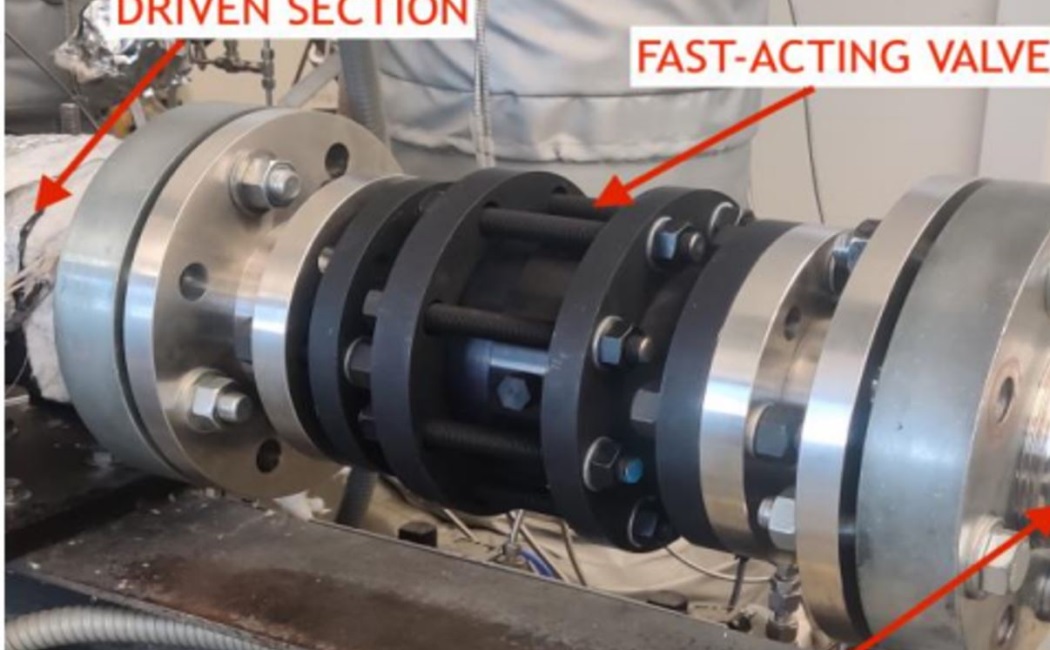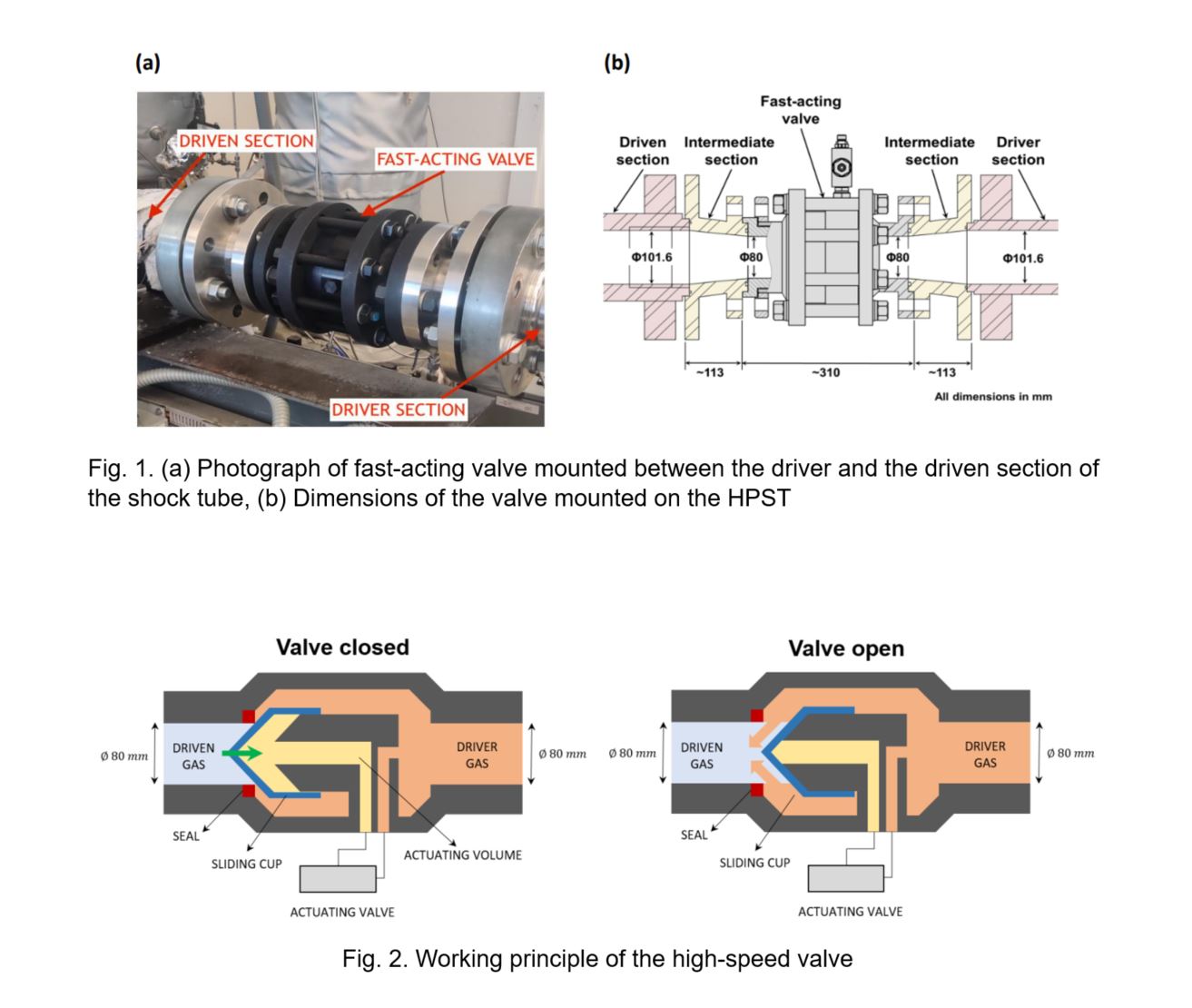

.png?sfvrsn=1b6bae1a_0) (FASTER)
(FASTER).png?sfvrsn=ac211bda_0)

A commercial fast-acting valve was procured from ISTA Pneumatics Inc., Russia (Model: KB-80-100). The valve is operated electro-pneumatically with a pilot pressure of 8 bar. The inlet and exit diameter of the valve is 80 mm and it has an overall length of about 310 mm. Figure 1a, shows the valve mounted on the HPST. Two separate sections were fabricated for a smooth transition from the driven/driver section to the valve diameter, as shown in Figure 1b. The valve sits between the two in-line sections driven and driver, facilitating direct mounting to the shock tube.
Figure 2 shows the internal working of the valve, a sliding cup acts a closure element to seal off the driver and driven section. The sliding cup is pushed forward by pressurizing the small volume element behind the cup. Once, the high and low-pressure regions are then filled to the desired pressures, the volume behind the cup is exhausted through an actuating valve. The cap retracts, opening the pathway between the driver and driven section. The front face of the cap has a conical shape to streamline the flow of the driver gas into the driven section.

The performance of the diaphragmless shock tube was examined by a series of non-reactive experiments before performing IDT measurements. Experiments were performed using helium at different driver gas pressures (P4) and argon in the driven section (P1 = 450 Torr). Figure 3a shows a plot of the shock Mach number (MS) at different pressure ratios P41. The experimental trend obtained for diaphragmless mode of operation is similar to that obtained using diaphragms and the ideal shock tube relation (assume an inviscid, adiabatic, and one-dimensional flow). The longer opening time of the fast-acting valve (~ 7 ms - quoted by the supplier) compared to the typical rupture time scale of metal diaphragms (≤ 1 millisecond) results in lower shock Mach numbers obtained in the diaphragmless mode of operation. Figure 3b demonstrates the repeatability of the valve and compares it with the single and double diaphragm modes of operation. The reduced temperature and pressure obtained in the case of the valve are due to its lower efficiency.
